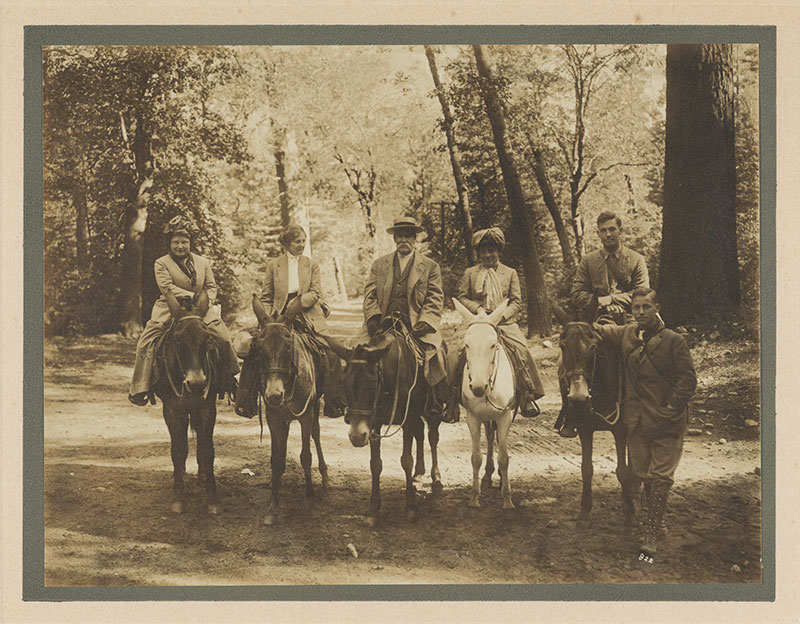In May of 1913, Mary Gamble was eagerly anticipating the family’s 10-day trip to “the Yosemite,” hoping they would be able to stay at Camp Ahwahnee (which had opened just two years previously). Archival photographs appear to confirm that the family was successful in procuring a few of the camp’s tent cabins, where they could rest after a ride or gaze at the night sky fringed by surrounding pines. Located at the foot of Sentinel Rock, the camp would also have offered the Gambles a beautiful view of Yosemite Falls. Other photos show them enjoying the park’s amenities, from coach rides through the giant Sequoias to horse back riding.
By 1913, it had been nearly 50 years since Abraham Lincoln had signed the Yosemite Grant, making the Yosemite Valley and Mariposa Grove of Giant Sequoias the first territory ever set aside by Congress for public use and preservation. In 1890, John Muir had been instrumental in persuading Congress to create 1500 square miles of land as Yosemite National Park.
Also by 1913, the Gambles had lived in their new Pasadena house at 4 Westmoreland Place for four seasons (it was a winter residence, after all). They were no strangers to the great outdoors or to the promise of adventure just beyond their front door. Their youngest son, Clarence, just 14 when the family was beginning to build the house, frequently went walking or riding in the nearby Arroyo Seco, the “unspoiled natural park…with its perennial stream and groves of magnificent trees, rocks, cliffs, and acres of boulders, wide stretches of oak-dotted sward, and the snow-capped mountains closing every vista.” “Even in the early years of visiting Pasadena, the Gambles along with thousands of other fellow tourists flocked to the local Mount Lowe Railway, with its connection to Echo Mountain, and the open-air Alpine trolleys promising stunning views of the local hillsides and canyons.
The situation of the Gambles’ house along the Arroyo also gave them a full appreciation of nature, and with its open terraces and sleeping porches it was a home that offered what Gustav Stickley termed a “friendly relation with out-of-doors.” They slept outside even when at home, Mary remarking in a letter to Clarence “We have had some glorious sunsets lately and I have wished that you might feast your eyes on them and then enjoy the nights on the porch.” This was certainly one of the great advantages of coming to the “Land of Sunshine,” the “West of the west,” where nature was only ever a few steps away, whether mountains, forests, deserts or sea.
~ Anne Mallek, Curator.



Leave a Reply